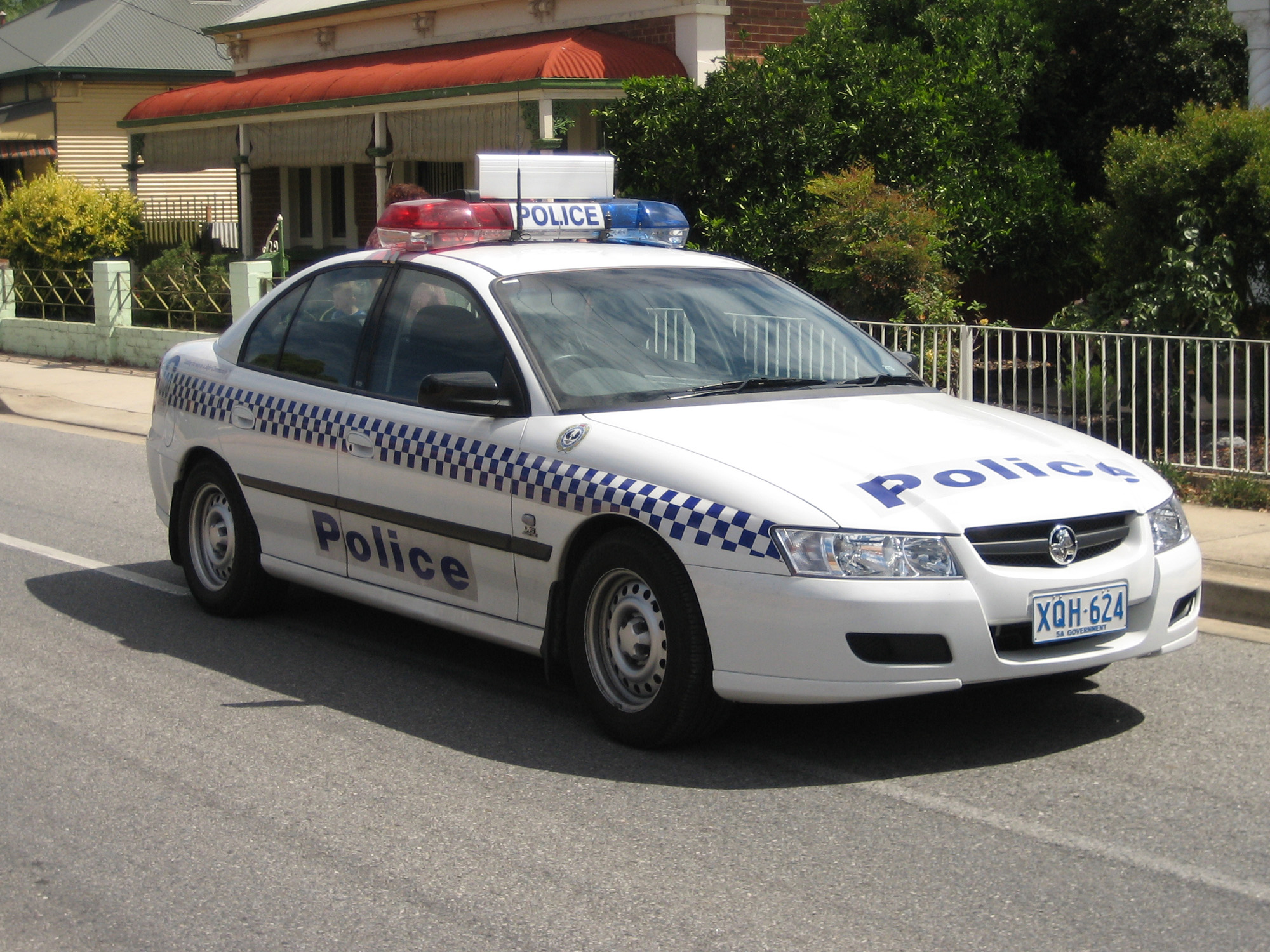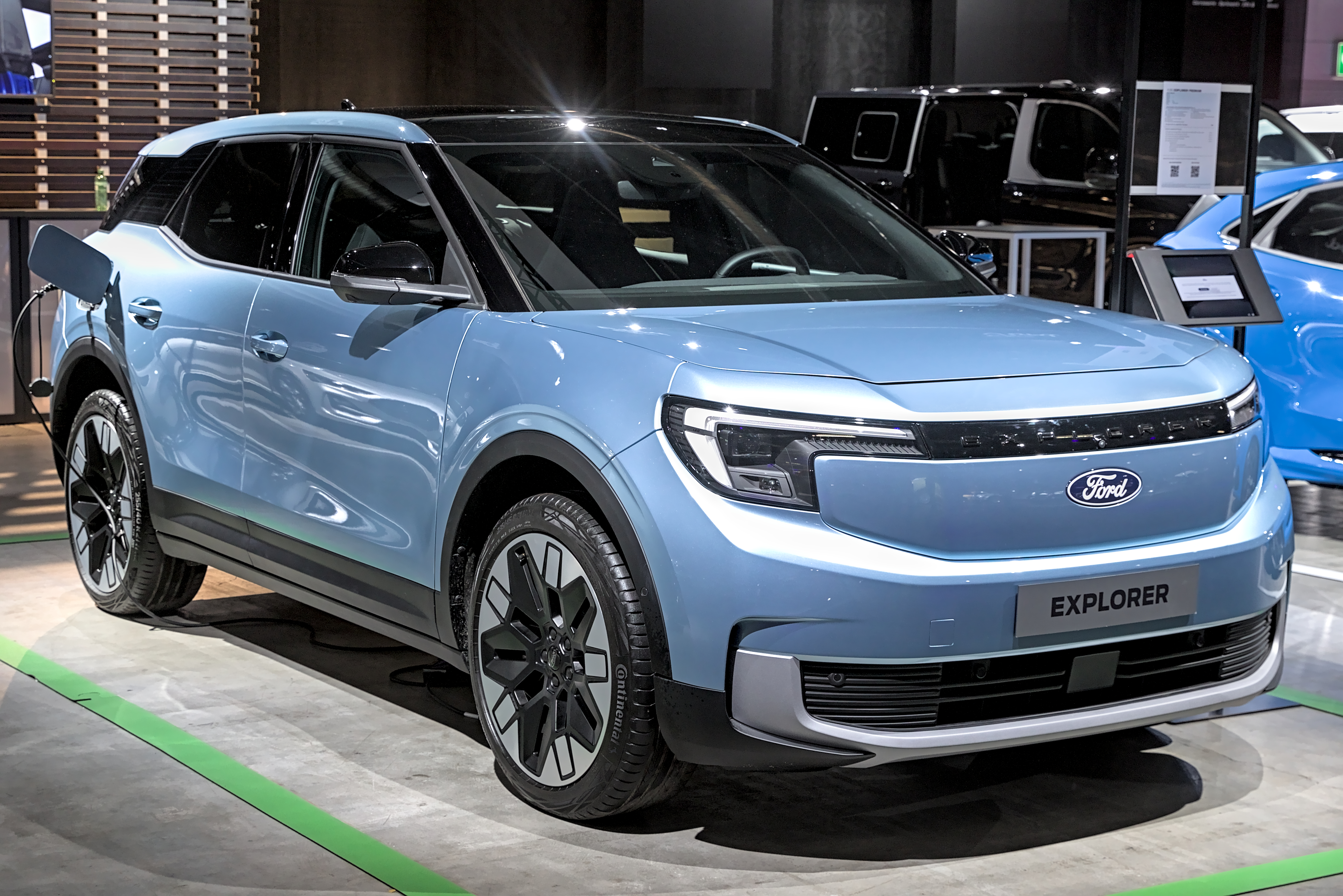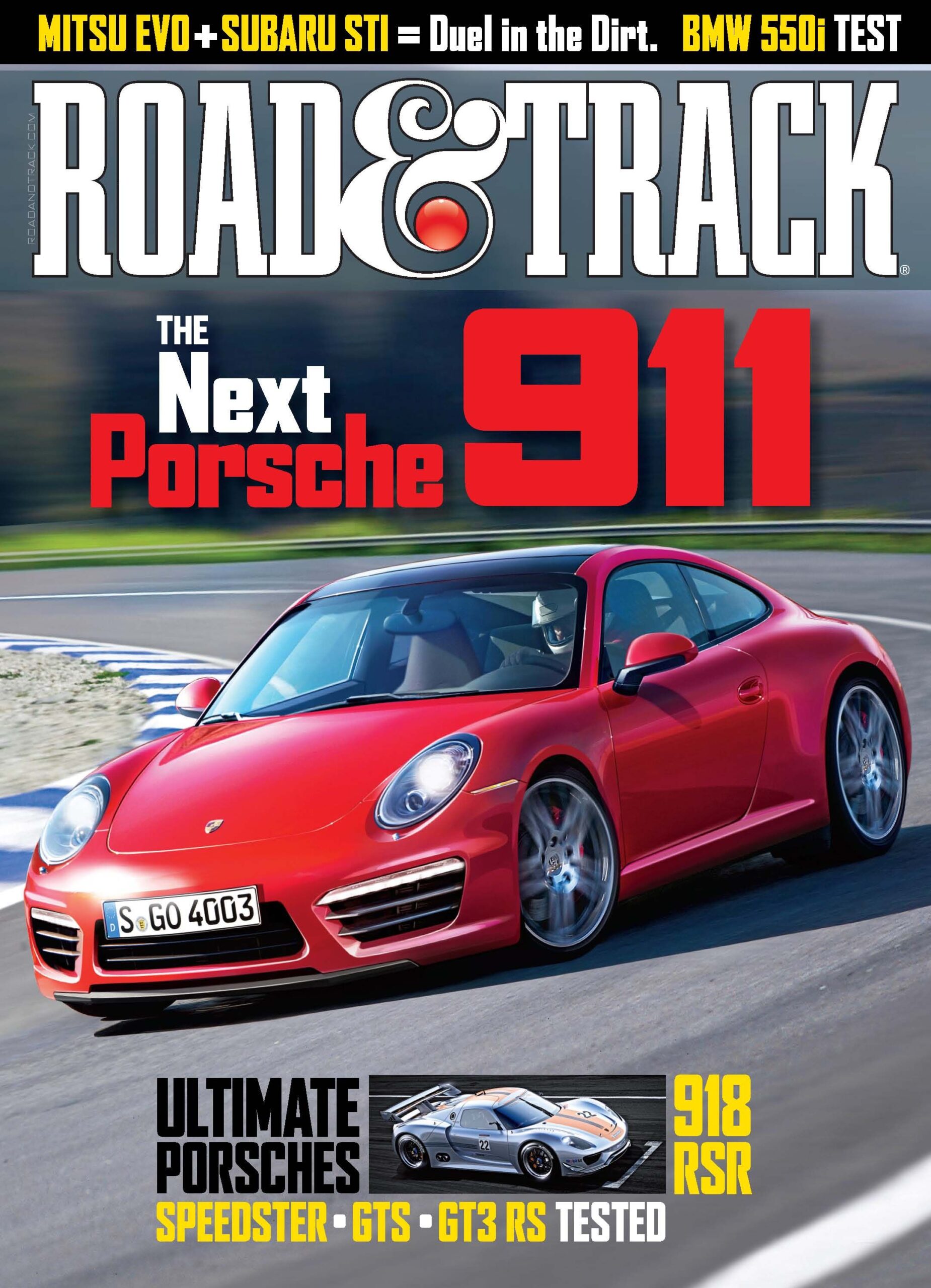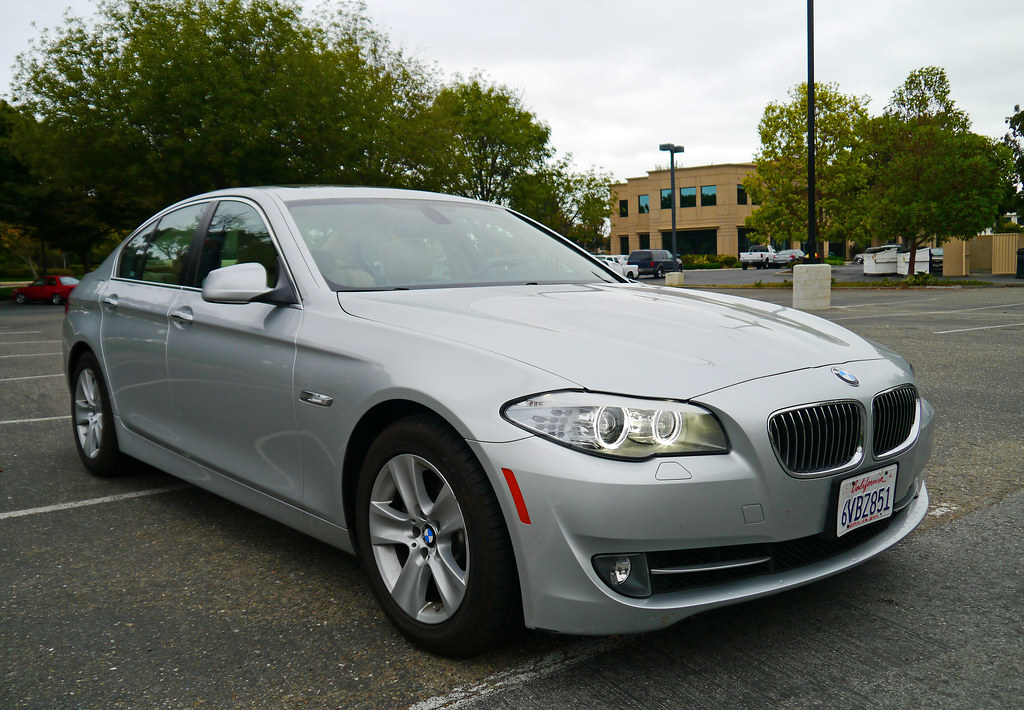
When it comes to purchasing a new vehicle, the initial price tag is just one piece of the financial puzzle. A critical, yet often overlooked, factor that can significantly impact your long-term automotive investment is resale value. Choosing a car that holds its worth can literally save you thousands of dollars, bolstering your next down payment and ensuring a smoother transition when it’s time to upgrade. Conversely, a vehicle that plummets in value can quickly become a financial burden, turning a dream car into a depreciating asset that drains your wallet.
Recent findings from a comprehensive study conducted by the online vehicle marketplace iSeeCars.com shed stark light on this very issue. Examining the transaction prices of an astounding 800,000 five-year-old used cars sold between March 2024 and February 2025, iSeeCars meticulously determined the actual depreciation rates for a vast array of models. While Kelley Blue Book, for instance, focuses on predicting future depreciation for new models, iSeeCars offers a crucial look at real-world data, revealing which vehicles have truly struggled to retain their original value after half a decade on the road.
This in-depth analysis moves beyond the best performers, which are often mainstream trucks, SUVs, and sports cars, to instead focus on the “rogues gallery” of the industry’s biggest losers. The insights are clear: luxury vehicles, with their premium badges and advanced features, and many cutting-edge electric vehicles, consistently demonstrate the highest average rates of depreciation over a five-year ownership period. As iSeeCars Executive Analyst Karl Brauer explains, “While a premium badge and the increased performance or luxury features that come with it are often sought out by new car buyers, the used car market doesn’t prioritize those traits to the same degree, thus the consistently higher depreciation for luxury models.” Let’s dive into the first seven models that have delivered the most painful financial blows to their owners.
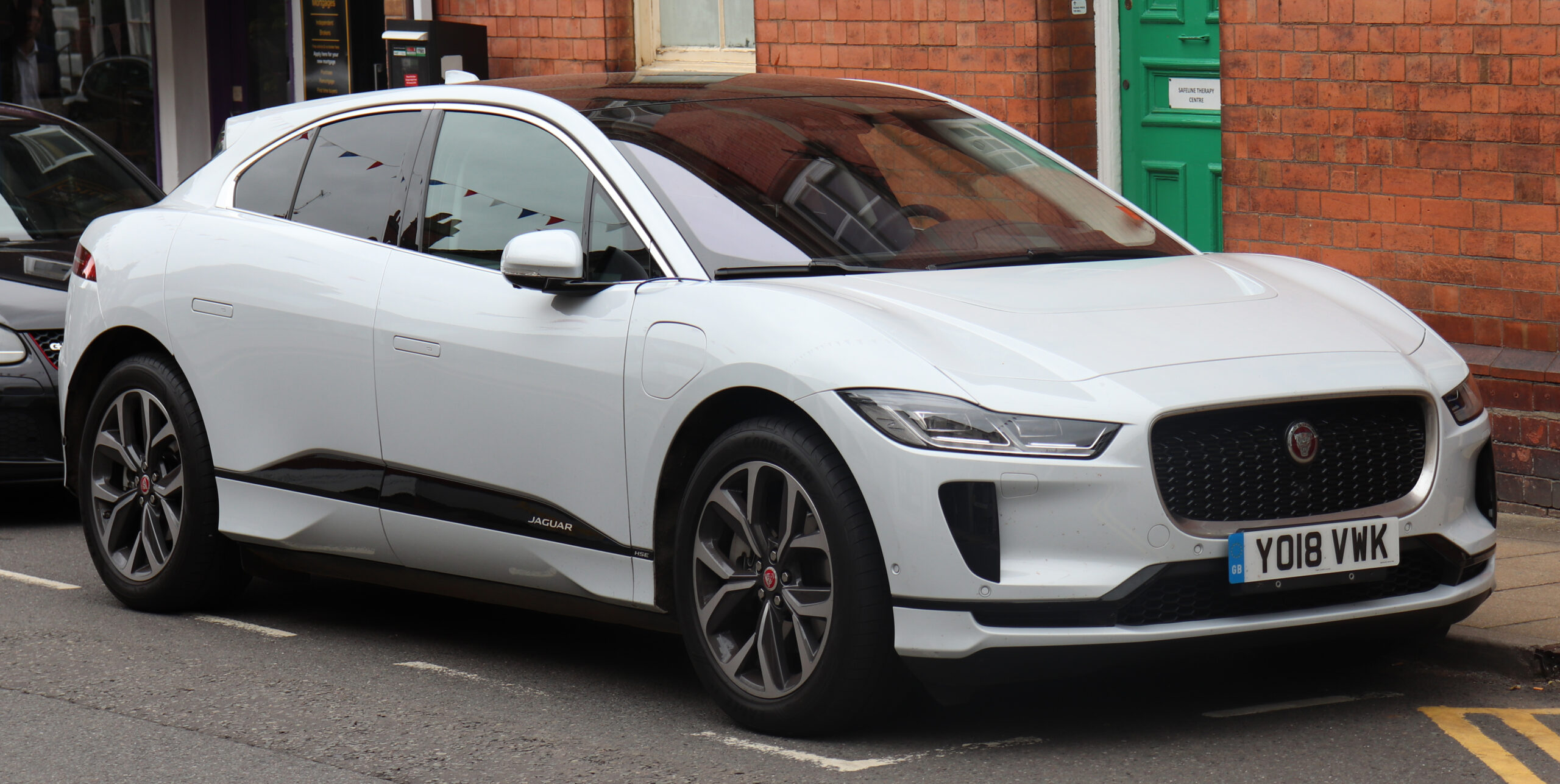
1. **Jaguar i-Pace EV**Leading our list of depreciation disasters is the Jaguar i-Pace EV, a luxury electric SUV that, despite its initial promise and sophisticated design, has seen an astonishing 72.2% of its original MSRP vanish over a five-year period. This translates to an average financial hit of $51,953 for its owners. As a pioneering electric vehicle from a luxury brand, the i-Pace embodies a confluence of factors that often lead to rapid value loss, squarely placing it at the top of iSeeCars’ unenviable ranking. Its steep decline underscores the significant challenges faced by luxury electric vehicles in the used car market.
The primary culprit behind the i-Pace’s dramatic depreciation lies in its dual identity as both a luxury vehicle and an electric vehicle. Luxury cars, by their very nature, tend to shed value quicker than their mainstream counterparts, a phenomenon explained by iSeeCars Executive Analyst Karl Brauer, who notes that “the used car market doesn’t prioritize those traits to the same degree.” When combined with the rapid evolution of EV technology, the challenge becomes even more pronounced. Early electric models, including the i-Pace, often grapple with concerns about battery degradation, range anxiety, and the relentless introduction of newer models with superior battery technology and faster charging capabilities.
The overall depreciation rate for five-year-old electric cars stands at a stiff 58.8%, significantly higher than the industry average of 45.6% across all vehicle segments, according to iSeeCars data. This broader trend directly impacts models like the i-Pace. While its “kilowatt-powered” performance and distinctive Jaguar styling might appeal to new buyers seeking cutting-edge luxury, these attributes do not translate into strong used-market demand. Potential second-hand buyers are often hesitant, weighing the high initial cost of a luxury EV against the perceived risks of outdated technology and expensive component replacements.
Furthermore, the i-Pace’s position in the luxury SUV segment places it against formidable competition that often boasts more established brand loyalty and a wider service network, even for traditional internal combustion engine vehicles. This competitive landscape, coupled with the inherent complexities and higher maintenance costs associated with luxury brands, exacerbates its depreciation woes. The market’s perception of long-term reliability and the cost of repairs for high-tech, luxury EVs can also contribute to this significant drop in value, making the Jaguar i-Pace a cautionary tale for luxury EV early adopters.
Car Model Information: 2024 RAM 2500 Big Horn
Name: Jaguar I-Pace
Manufacturer: Jaguar Land Rover
Production: 2018–2024
Assembly: Magna Steyr
Designer: Ian Callum
Class: Compact crossover SUV#Luxury vehicles
BodyStyle: SUV
Layout: all-wheel-drive
Platform: Jaguar Land Rover car platforms#D7e
Motor: Permanent magnet synchronous motor
Abbr: on
Transmission: 1-speed direct-drive reduction
Battery: kW·h,Lithium-ion battery
ElectricRange: United States Environmental Protection Agency
Charging: 11kW AC (7.4kW “1-phase/32A only” AC 2018–2020),100 kW DC
Wheelbase: 2990 mm
Length: 4682 mm
Width: ubl
Height: 1565 mm
Weight: 2133 kg
Sp: uk
Categories: 2020s cars, All-wheel-drive vehicles, All Wikipedia articles written in British English, All accuracy disputes, All articles lacking reliable references
Summary: The Jaguar I-Pace (stylised as I-PACE) is a battery-electric crossover SUV produced by Jaguar Land Rover (JLR) under their Jaguar marque. The I-Pace was announced in March 2018, European deliveries began in June 2018 and North American deliveries started in October 2018. Amid slowing sales and a change in corporate vision, Jaguar has announced that the I-Pace will be discontinued by 2025.
Get more information about: Jaguar I-Pace
Buying a high-performing used car >>>
Brand: Jaguar Model: i-Pace EV
Price: $46,895 Mileage: 37,555 mi.
Read more about: Navigating the Market: The 10 Cars with the Steepest Depreciation, What Analysts Reveal for Lease Holders
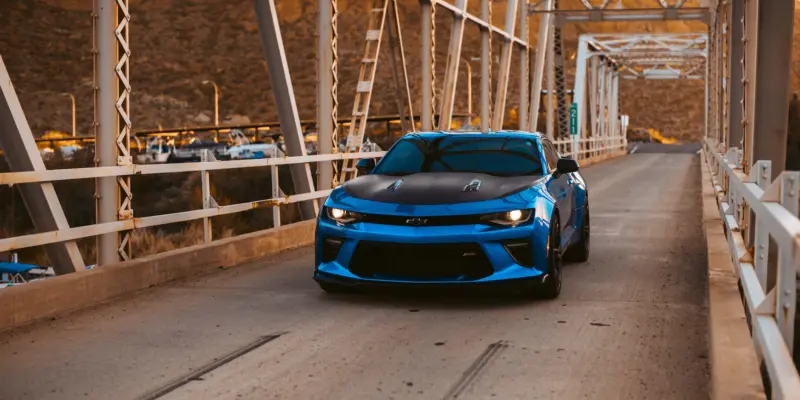
2. **BMW 7 Series sedan**Following closely behind the i-Pace in the race to the bottom is the BMW 7 Series sedan, which sheds a staggering 67.1% of its original MSRP over five years, representing an average loss of $65,249. As BMW’s flagship luxury sedan, the 7 Series is designed to embody opulence, cutting-edge technology, and a sophisticated driving experience. However, these very attributes, while appealing to the initial buyer, paradoxically contribute to its rapid depreciation in the used car market, making it a challenging investment for those concerned with long-term value retention.
A significant factor in the 7 Series’ dramatic value loss is its inherently high cost of ownership. Luxury vehicles, as a general rule, experience steeper depreciation curves, and the 7 Series exemplifies this trend. The substantial initial purchase price is compounded by equally expensive maintenance and repair costs, which act as a deterrent for potential second-hand buyers. Many luxury cars integrate highly advanced technology and intricate features that, while impressive when new, can become exceedingly costly to service or replace as they age, directly impacting the vehicle’s long-term desirability and, consequently, its resale value.
The relentless pace of automotive technological advancement further erodes the 7 Series’ value. As BMW continually introduces newer models packed with updated features, enhanced performance, and the latest innovations, older generations rapidly lose their competitive edge. The 7 Series, often a pioneer in adopting features like gesture control, sophisticated driver assistance systems, and state-of-the-art infotainment, finds that these once-revolutionary technologies can quickly become outdated. This swift obsolescence makes prior model years less attractive to consumers seeking modern amenities, driving down their market price.
Moreover, the luxury sedan segment is fiercely competitive, with the BMW 7 Series facing direct challenges from equally prestigious rivals such as the Mercedes-Benz S-Class and the Audi A8. These competitors offer comparable levels of luxury, performance, and technological sophistication, providing potential buyers with a wide array of choices. This intense market saturation means that older 7 Series models must compete against both newer versions of themselves and a strong lineup of alternatives, contributing significantly to their accelerated depreciation and solidifying their place on this list of value-losing vehicles.
Car Model Information: 2024 RAM 2500 Big Horn
Name: BMW 7 Series
Caption: BMW 7 Series (G11)
Manufacturer: BMW
Production: 1977–present
Class: Full-size car,luxury car
BodyStyle: sedan (car)
Predecessor: BMW New Six
Categories: All articles with dead external links, Articles with dead external links from July 2021, Articles with short description, BMW vehicle series, CS1 Chinese-language sources (zh)
Summary: The BMW 7 Series is a full-size luxury sedan manufactured and marketed by the German automaker BMW since 1977. It is the successor to the BMW E3 “New Six” sedan and is now in its seventh generation.
The 7 Series is BMW’s flagship car and is only available in a sedan bodystyle (including long wheelbase and limousine models). It traditionally introduces technologies and exterior design themes before other models in BMW’s lineup.
The first generation of the 7 Series was powered by straight-6 petrol engines, and following generations have been powered by inline-4, straight-6, V8 and V12 engines with both natural aspiration and turbocharging. Since 1995, diesel engines have been optional in the 7 Series.
Unlike the BMW 3 Series and BMW 5 Series sedans, BMW does not offer a full M model, but once offered an M performance variant, the BMW M760 with its 6.6L V12 (at the time the most powerful BMW ever made, not to be confused with BMW 760 6.6 V12 which does not offer the same performance). The Alpina B7 served as the high-performance variant of the 7 Series.
Get more information about: BMW 7 Series
Buying a high-performing used car >>>
Brand: BMW Model: 7 Series
Price: $46,895 Mileage: 37,555 mi.
Read more about: Navigating the Market: The 10 Cars with the Steepest Depreciation, What Analysts Reveal for Lease Holders
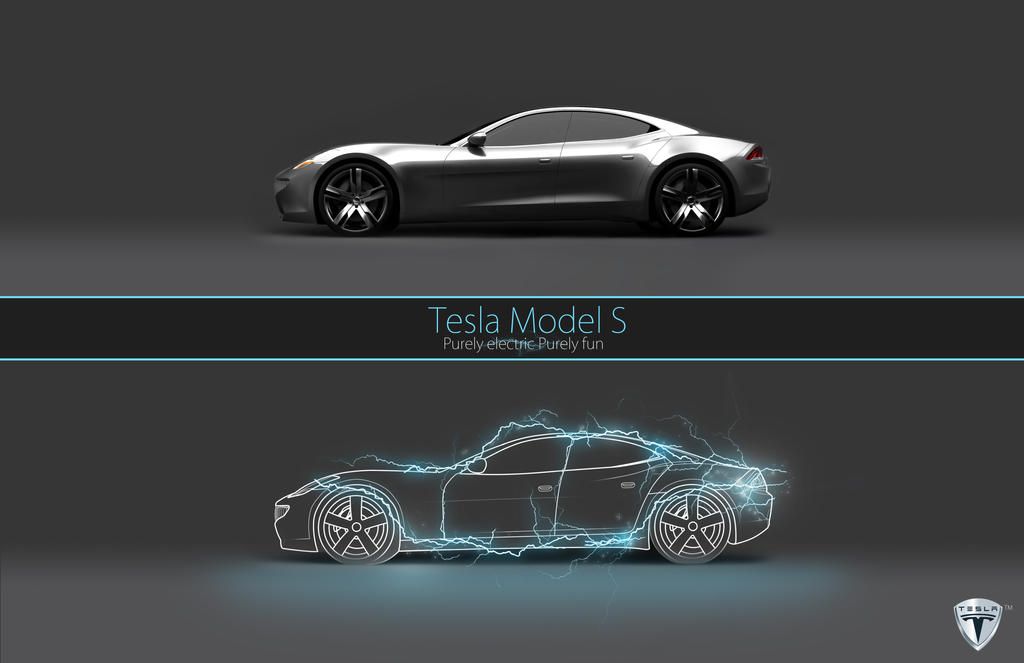
3. **Tesla Model S EV**The Tesla Model S EV makes a prominent appearance on this list, having lost an substantial 65.2% of its original MSRP over a five-year period, equating to an average financial depreciation of $52,165. This figure, as highlighted by iSeeCars data, places the Model S among the top offenders for value retention, and its presence is, perhaps, unsurprising given recent trends in the electric vehicle market and broader narratives surrounding the brand. As a trailblazer in the luxury EV space, the Model S has shaped expectations for electric performance, yet its resale journey has been turbulent.
A key factor contributing to the Model S’s significant depreciation, similar to other electric vehicles, is the relentless pace of technological advancement within the EV sector. What was cutting-edge five years ago can quickly become superseded by newer battery chemistries, faster charging capabilities, and expanded range figures in subsequent models. Electric vehicles, “like most cutting-edge tech-driven commodities, tend not to age gracefully,” as noted in the study. This rapid obsolescence of technology, coupled with the high cost of potential battery replacements or upgrades, makes older EV models less attractive to secondary market buyers.
Beyond the inherent challenges of EV technology, Tesla’s unique market position and the brand’s direct-to-consumer sales model also play a role. Unlike traditional luxury brands where established dealer networks often help stabilize used car values through certified pre-owned programs and widespread service availability, Tesla’s approach has different implications. Furthermore, the brand has been impacted by “the fallout from eccentric CEO Elon Musk’s foray into federal governance,” which can indirectly influence public perception and, by extension, market demand for its vehicles, particularly in the used car segment.
The broader trend of electric vehicle depreciation also heavily impacts the Model S. With the overall depreciation rate among five-year-old electric cars being 58.8%—significantly higher than the 45.6% industry average—even a relatively strong performer like the Tesla Model 3 still exhibits depreciation “over 10% higher than the industry average,” according to Karl Brauer. The Model S, as an earlier and higher-priced offering, naturally faces even greater pressure. Its position on this list serves as a potent reminder that even highly desirable new cars can struggle to maintain their value in a rapidly evolving market landscape.
Car Model Information: 2024 RAM 2500 Big Horn
Name: Tesla Model S
ModelYears: 2013–present
Alt: A front-three quarter view of a gray Model S
Caption: #2016–2019: First major update
Designer: Franz von Holzhausen
Weight: cvt
Height: cvt
Width: cvt
Length: cvt
Wheelbase: cvt
ElectricRange: cvt
Battery: kWh,lithium-ion battery
Motor: Unbulleted list
Transmission: Reduction drive
Related: Tesla Model X
Layout: Rear-motor, rear-wheel drive,Dual-motor, all-wheel-drive,Tri-motor, all-wheel-drive layout
BodyStyle: liftback,sedan (automobile)
Class: Full-size car
Assembly: Unbulleted list
Production: June 2012 – present
Manufacturer: Tesla, Inc.
Sp: us
Chassis: Unibody
Categories: 2020s cars, All-wheel-drive vehicles, All Wikipedia articles written in American English, All articles containing potentially dated statements, Articles containing potentially dated statements from 2025
Summary: The Tesla Model S is a battery-electric, four-door full-size car produced by the American automaker Tesla since 2012. The automaker’s second vehicle and longest-produced model, the Model S has been described as one of the most influential electric cars in the industry. Car and Driver named it one of the best cars of the year in 2015 and 2016. Its various accolades include the Motor Trend Car of the Year Award in 2013.
Tesla started developing the Model S around 2007 under the codename WhiteStar. Initially, Henrik Fisker was appointed as the lead designer for the WhiteStar project; after a dispute with Elon Musk, Tesla’s CEO, Fisker was replaced by Franz von Holzhausen. By 2008, von Holzhausen had designed what would become the production Model S’s exterior. Tesla unveiled a prototype of the vehicle in March 2009 in Hawthorne, California. In 2010, Tesla acquired a facility in Fremont, California, to produce the Model S, which was previously owned by General Motors and Toyota. Series manufacture of the car officially began at the Tesla Fremont Factory in June 2012. Tesla carried out the final assembly for European markets at its facilities in Tilburg, Netherlands, between 2013 and 2021.
The Model S typically uses either one or initially two alternating current induction motors; since 2019, dual-motor versions have used a permanent magnet motor in the front, though the high-performance Model S Plaid’s three motors are permanent magnet units by default. Constructed mostly of aluminum, the Model S shares 30 percent of its components with the Model X—a crossover SUV that was introduced in 2015. The Model S has undergone several updates during its production, the most prominent ones occurring in 2016 and 2021. These updates have usually included modifications to the motor, such as changes to power or torque, revised exterior elements, and refreshed interior features. One such change included the 2015 introduction of Tesla Autopilot—a partial vehicle automation advanced driver-assistance system.
In 2015, the Model S was the world’s best-selling plug-in electric vehicle. In 2012, it was included on Time’s list of the Best Inventions of the Year, and the magazine later included it on its list of the 10 Best Gadgets of the 2010s in 2019. In 2014, The Daily Telegraph described the Model S as a “car that changed the world”. Road & Track argued that, with the introduction of the Plaid and features such as the yoke steering wheel, Tesla managed to turn the Model S into “perhaps one of the worst [cars in the world]”.
Get more information about: Tesla Model S
Buying a high-performing used car >>>
Brand: Tesla Model: Model S
Price: $46,895 Mileage: 37,555 mi.
Read more about: Urgent Safety Alert: Ford Recalls 133,000 Lincoln Aviator SUVs Over Detaching Trim Components

4. **Infiniti QX80 SUV**The Infiniti QX80 SUV enters our list with a significant depreciation rate of 65.0% over five years, resulting in an average loss of $53,571 for its owners. As a full-size luxury SUV, the QX80 is designed to offer commanding presence, a spacious interior, and a host of premium features. However, its substantial initial investment and the inherent characteristics of the luxury SUV segment contribute to its struggle in retaining value, placing it firmly among the vehicles that deliver a harsh financial blow to their owners in the long run.
One of the core reasons behind the QX80’s steep depreciation, a common theme among high-end vehicles, is the elevated cost of ownership. The formidable purchase price of a new luxury SUV like the QX80 sets a high bar, which is then often compounded by considerable expenses for maintenance, parts, and specialized service. These ongoing costs can deter used-car buyers who are often more budget-conscious and wary of the financial commitments associated with maintaining a large, premium vehicle outside of its initial warranty period.
Furthermore, the luxury SUV market is incredibly competitive and fast-evolving. Models like the QX80 face relentless pressure from rivals across various brands, all vying for market share with newer designs, more advanced technology, and often more fuel-efficient powertrains. While a “premium badge and the increased performance or luxury features that come with it are often sought out by new car buyers,” as Karl Brauer notes, “the used car market doesn’t prioritize those traits to the same degree.” This means that after five years, an older QX80, despite its initial grandeur, finds it difficult to stand out against a fresh crop of competitors and even more modern iterations from other luxury marques.
The sheer scale and fuel consumption typically associated with full-size luxury SUVs also play a role. As market preferences shift towards more economical or electrified options, older, larger gasoline-powered SUVs can see their appeal diminish. This, combined with brand perception and the general tendency for luxury vehicles to depreciate more rapidly than mainstream models, means the Infiniti QX80, while luxurious and capable, ultimately delivers a significant financial lesson to those who bought it new with hopes of strong resale value.
Car Model Information: 2020 INFINITI QX80 Luxe
Name: Infiniti QX80
Caption: 2019 Infiniti QX80 (US)
Manufacturer: Nissan
Aka: Infiniti QX56 (2004–2013)
Production: 2004–present
Class: Full-size,luxury SUV
BodyStyle: SUV
Layout: Front-engine, rear-wheel-drive,Front-engine, four-wheel-drive
Predecessor: Nissan Pathfinder#Infiniti QX4
Chassis: Body-on-frame
Categories: 2010s cars, 2020s cars, All-wheel-drive vehicles, All articles with failed verification, All articles with unsourced statements
Summary: The Infiniti QX80 (formerly called the Infiniti QX56 until 2013) is a full-size luxury SUV marketed by Nissan’s luxury division Infiniti since the 2004 model year. The first-generation QX56 was built in the United States and is based on the first-generation Armada. The second-generation model was released in 2010 as a model produced in Japan, which used the sixth-generation Patrol (later also marketed as the second-generation Armada since 2016) as the base vehicle instead. Since the 2014 model year in 2013, the vehicle was renamed to the QX80 as Infiniti renamed their entire product line under a new nomenclature.
Get more information about: Infiniti QX80
Buying a high-performing used car >>>
Brand: Infiniti Model: QX80
Price: $23,656 Mileage: 104,531 mi.
Read more about: Navigating the Market: The 10 Cars with the Steepest Depreciation, What Analysts Reveal for Lease Holders
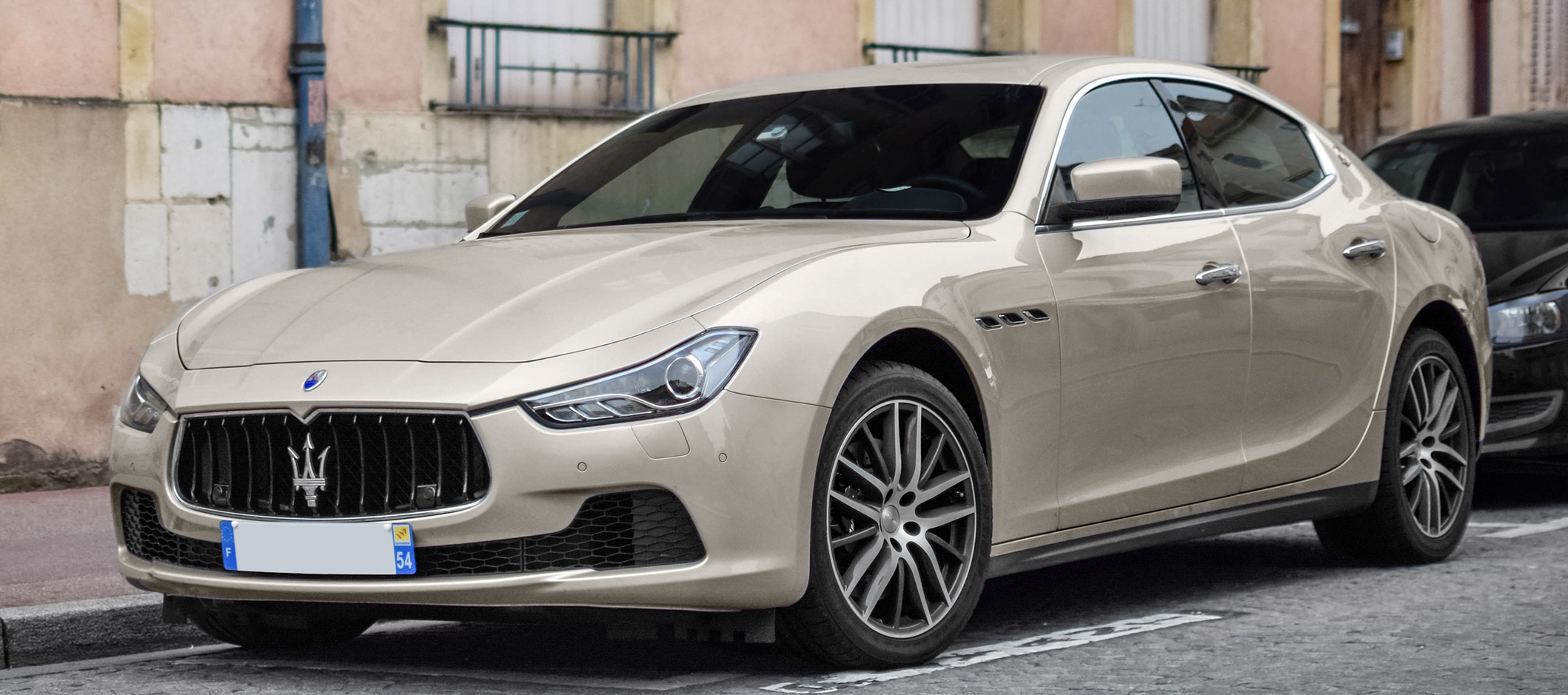
5. **Maserati Ghibli sedan**The Maserati Ghibli sedan, a captivating blend of Italian design flair and exhilarating performance, unfortunately, finds itself among the vehicles with the most severe depreciation, losing a substantial 64.7% of its original MSRP over five years. This translates to an eye-watering average loss of $70,874, making it one of the costliest depreciation experiences on our list. Despite its allure and the prestige associated with the Maserati badge, the Ghibli’s journey through the used car market is a stark reminder of the financial realities that can accompany luxury and exotic ownership.
A fundamental contributor to the Ghibli’s rapid value erosion is its high cost of ownership, a characteristic often inherent to luxury and exotic automobiles. The initial premium purchase price is merely the beginning, as Maserati’s reputation for expensive maintenance and the necessity for specialized servicing further deters prospective second-hand buyers. These factors contribute to a perception of high long-term running costs, making a used Ghibli a less appealing proposition for those not prepared for the significant financial outlay required beyond the initial purchase.
Compounding its depreciation is Maserati’s relatively limited brand recognition when compared to the ubiquitous presence and established reliability reputations of German luxury giants like BMW, Mercedes-Benz, and Audi. While Maserati commands respect for its rich heritage and distinct Italian craftsmanship, it doesn’t possess the same broad market appeal or perceived reliability in the eyes of a wide range of used car buyers. This narrower appeal limits demand in the secondary market, which invariably impacts resale values more negatively than for brands with a larger, more consistently trusted base.
The Maserati Ghibli also operates within a fiercely competitive luxury sedan segment. It battles for attention against robust offerings such as the BMW 5 Series, Mercedes-Benz E-Class, and Audi A6, all of which often provide comparable levels of luxury, performance, and technology. This crowded marketplace ensures that potential buyers have an abundance of choices, and without a distinct, perceived advantage in reliability or lower running costs, the Ghibli struggles to retain its value against these strong, more mainstream luxury contenders, leading to its significant drop in price over time.
Car Model Information: 2014 Maserati Ghibli Base
Name: Maserati Ghibli
Caption: 2018 Maserati Ghibli GranLusso
Manufacturer: Maserati
Assembly: Modena,Grugliasco,Turin
Class: Grand tourer,Executive car
BodyStyle: fastback,coupé,Roadster (automobile),Sedan (automobile)
Production: AM115: 1967–1973,AM336: 1992–1998,M157: 2013–2023
Categories: 1970s cars, 1990s cars, 2010s cars, Articles with short description, CS1 Italian-language sources (it)
Summary: Maserati Ghibli is the name of three different cars produced by Italian automobile manufacturer Maserati: the AM115, a V8 grand tourer from 1967 to 1973; the AM336, a V6 twin-turbocharged coupé from 1992 to 1998; and the M157, an executive saloon from 2013 to 2023.
Ghibli is the Libyan Arabic name for the hot dry south-westerly wind of the Libyan desert.
Get more information about: Maserati Ghibli
Buying a high-performing used car >>>
Brand: Maserati Model: Ghibli
Price: $10,980 Mileage: 83,121 mi.
Read more about: Navigating the Market: The 10 Cars with the Steepest Depreciation, What Analysts Reveal for Lease Holders
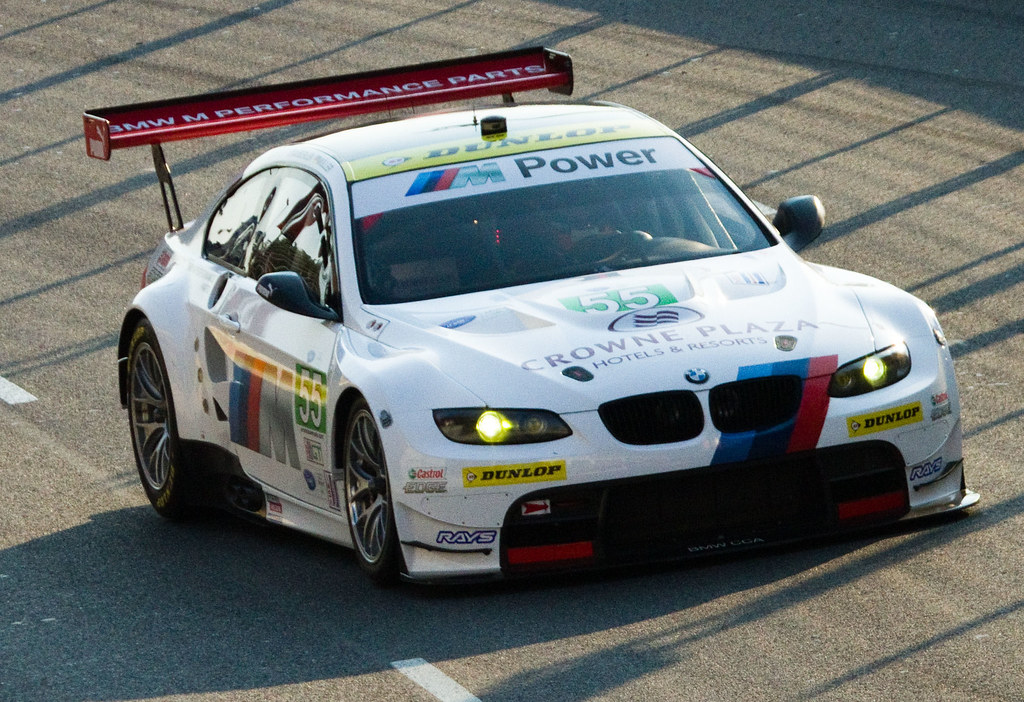
6. **BMW 5 Series hybrid**Sharing the same steep depreciation rate as the Maserati Ghibli, the BMW 5 Series hybrid loses 64.7% of its original MSRP over five years, representing an average financial hit of $47,457. While the standard BMW 5 Series sedan itself experiences significant value loss (61.7%), the hybrid variant often faces additional challenges in the used market, combining the inherent depreciation traits of a luxury sedan with the specific concerns associated with older hybrid or electrified powertrains. This blend of factors makes it a particularly difficult investment for long-term value retention.
The primary drivers of depreciation for the 5 Series hybrid mirror those of its conventional luxury sedan counterparts, primarily the high cost of ownership. The initial premium for a BMW is substantial, and this is followed by significant expenses for maintenance and repairs, particularly as the vehicle ages. Luxury vehicles, as a category, are known for their rapid depreciation, and adding the complexity of a hybrid system can sometimes exacerbate this, as potential buyers may perceive higher long-term repair costs associated with the blend of traditional engine and electric components.
Furthermore, the “hybrid” aspect introduces its own set of depreciation challenges, similar to those seen with pure electric vehicles. While not as extreme as full EVs, older hybrid technologies can also suffer from the rapid advancements in battery technology and powertrain efficiency. Consumers in the used market might be wary of the lifespan and potential replacement costs of aging hybrid battery packs, or they may simply prefer newer hybrid systems that offer greater fuel economy or more robust electric-only ranges, rendering earlier models less appealing.
The BMW 5 Series operates in a highly competitive segment, facing off against formidable rivals like the Mercedes-Benz E-Class, Audi A6, and Jaguar XF. This intense competition ensures that used models must contend with a constant influx of newer, more appealing options, both from BMW itself and from its competitors. For the hybrid variant, this competition is amplified by the presence of newer, more efficient hybrid or plug-in hybrid options, which collectively push down the resale value of older models, making the 5 Series hybrid a prime example of a luxury car struggling to hold its worth.
Car Model Information: 2024 RAM 2500 Big Horn
Name: BMW 5 Series
Manufacturer: BMW
Production: 1972–present
Class: Executive car
BodyStyle: Sedan (automobile)
Layout: Front-engine, rear-wheel-drive,Front-engine, all-wheel-drive
Predecessor: BMW New Class
Categories: 1980s cars, 1990s cars, 2000s cars, 2010s cars, 2020s cars
Summary: The BMW 5 Series is an executive car manufactured and marketed by BMW since 1972. It is the successor to the BMW New Class sedans and is currently in its eighth generation. The car is sold as either a sedan or, since 1991, a station wagon (marketed as “Touring”). A 5-door fastback (marketed as “Gran Turismo”) was sold between 2009 and 2017. Each successive generation has been given an internal G-code designation since 2017. Previously, a F-code designation was used between 2010 and 2016, while an E-code designation was used between 1972 and 2010. These are used to distinguish each model and generation from each other.
The first generation of the 5 Series was powered by naturally aspirated four-cylinder and six-cylinder petrol engines. Following generations have been powered by four-cylinder, six-cylinder, V8 and V10 engines that are either naturally aspirated or turbocharged. Since 1982, diesel engines have been included in the 5 Series range.
The 5 Series is BMW’s second-best-selling model after the 3 Series. On 29 January 2008, the 5 millionth 5 Series was manufactured, a 530d sedan in Carbon Black Metallic. It is BMW’s oldest nameplate still in production and the first model line to use “Series” in the name, debuting the three-digit model naming convention still used today. Since the E28, all generations of 5 Series have included an “M” model, called the BMW M5.
Get more information about: BMW 5 Series
Buying a high-performing used car >>>
Brand: BMW Model: 5 Series
Price: $46,895 Mileage: 37,555 mi.
Read more about: Urgent Safety Alert: Ford Recalls 133,000 Lincoln Aviator SUVs Over Detaching Trim Components

7. **Nissan Leaf EV**The Nissan Leaf EV, a true pioneer in the mass-market electric vehicle segment, has seen a substantial 64.1% of its original MSRP evaporate over five years, translating to an average loss of $18,043. While its initial role in making eco-friendly transportation accessible was pivotal, its journey through the used car market highlights the unique vulnerabilities of early EV models. The Leaf’s rapid depreciation underscores the fierce technological race within the electric vehicle industry and the subsequent impact on older generations.
The relentless pace of advancements in EV technology stands as the foremost reason for the Leaf’s significant value loss. As the market floods with newer electric models boasting extended ranges, faster charging times, and improved overall features, older Leaf models with their comparatively limited ranges—especially earlier generations—struggle immensely to compete. The rapid evolution of battery technology means that what was considered acceptable or even cutting-edge just a few years ago is quickly rendered less appealing, directly affecting the resale attractiveness of these foundational EVs.
Another critical factor influencing the Nissan Leaf’s depreciation is the pervasive concern surrounding battery degradation over time. Electric vehicle battery packs inherently lose capacity with age and usage, leading to a noticeable reduction in driving range and overall performance. Potential buyers in the used market are understandably apprehensive about acquiring an EV with an aging battery, particularly given the substantial cost and complexity associated with battery replacement. This uncertainty around long-term battery health acts as a significant deterrent, driving down demand and, consequently, resale values.
The Nissan Leaf also faces intense competition, not just from its internal combustion engine counterparts, but increasingly from a burgeoning field of newer, more advanced electric vehicles. Models like Tesla’s Model 3 have aggressively captured market share and popularity, often overshadowing the Leaf in terms of performance, range, and technological sophistication. This heightened competitive landscape makes it exceedingly difficult for the Leaf to retain its value, as consumers have an ever-growing array of more compelling and modern EV options, reinforcing its position on this list of value-losing vehicles.
Our journey through the automotive landscape of rapid depreciation continues, revealing more models that have proven to be challenging investments for their owners. The patterns observed in the first seven vehicles—namely, the susceptibility of luxury marques and early electric vehicles to significant value loss—are further underscored as we delve into the next eight examples. These vehicles, ranging from high-performance luxury SUVs to advanced electric crossovers, illustrate how competitive pressures, evolving consumer preferences, and the relentless march of technological innovation can dramatically reshape a car’s financial trajectory. The data from iSeeCars.com provides a stark look at the real-world financial implications for owners.
Car Model Information: 2024 RAM 2500 Big Horn
Name: Nissan Leaf
Caption: A second generation Nissan Leaf
Manufacturer: Nissan
Production: October 2010 – present
ModelYears: 2011–present
Class: Unbulleted list
BodyStyle: Unbulleted list
Layout: Front-engine, front-wheel-drive layout
Predecessor: Unbulleted list
Categories: 2020s cars, All articles containing potentially dated statements, All articles with dead external links, Articles containing Japanese-language text, Articles containing potentially dated statements from December 2015
Summary: The Nissan Leaf (Japanese: 日産・リーフ, Hepburn: Nissan Rīfu; stylized as LEAF) is a battery-electric car manufactured by Nissan, produced since 2010. It was offered exclusively as a 5-door hatchback until 2025, which since then has become a crossover SUV model. The term “LEAF” serves as a backronym to leading environmentally-friendly affordable family car.
The Leaf was unveiled on 1 August 2009 as the world’s first mass market electric and zero-emission vehicle. Among other awards and recognition, it received the 2010 Green Car Vision Award, the 2011 European Car of the Year, the 2011 World Car of the Year, and the 2011–2012 Car of the Year Japan. The Leaf’s range on a full charge has been steadily increased from 117 km (73 miles) to 364 km (226 miles) (EPA rated) by the use of larger battery packs and several minor improvements.
As of September 2021, European sales totalled more than 208,000, and as of December 2021, over 165,000 had been sold in the U.S., and 157,000 in Japan. Global sales across both generations totalled 577,000 by February 2022. The Leaf was the world’s all-time top selling plug-in electric car until it was surpassed in early 2020 by the Tesla Model 3.
Get more information about: Nissan Leaf
Buying a high-performing used car >>>
Brand: Nissan Model: Leaf EV
Price: $46,895 Mileage: 37,555 mi.
Read more about: Unearthing Hidden Gems: 13 Forgotten Hot Hatches from the ’70s, ’80s, and ’90s That Still Go Like Hell
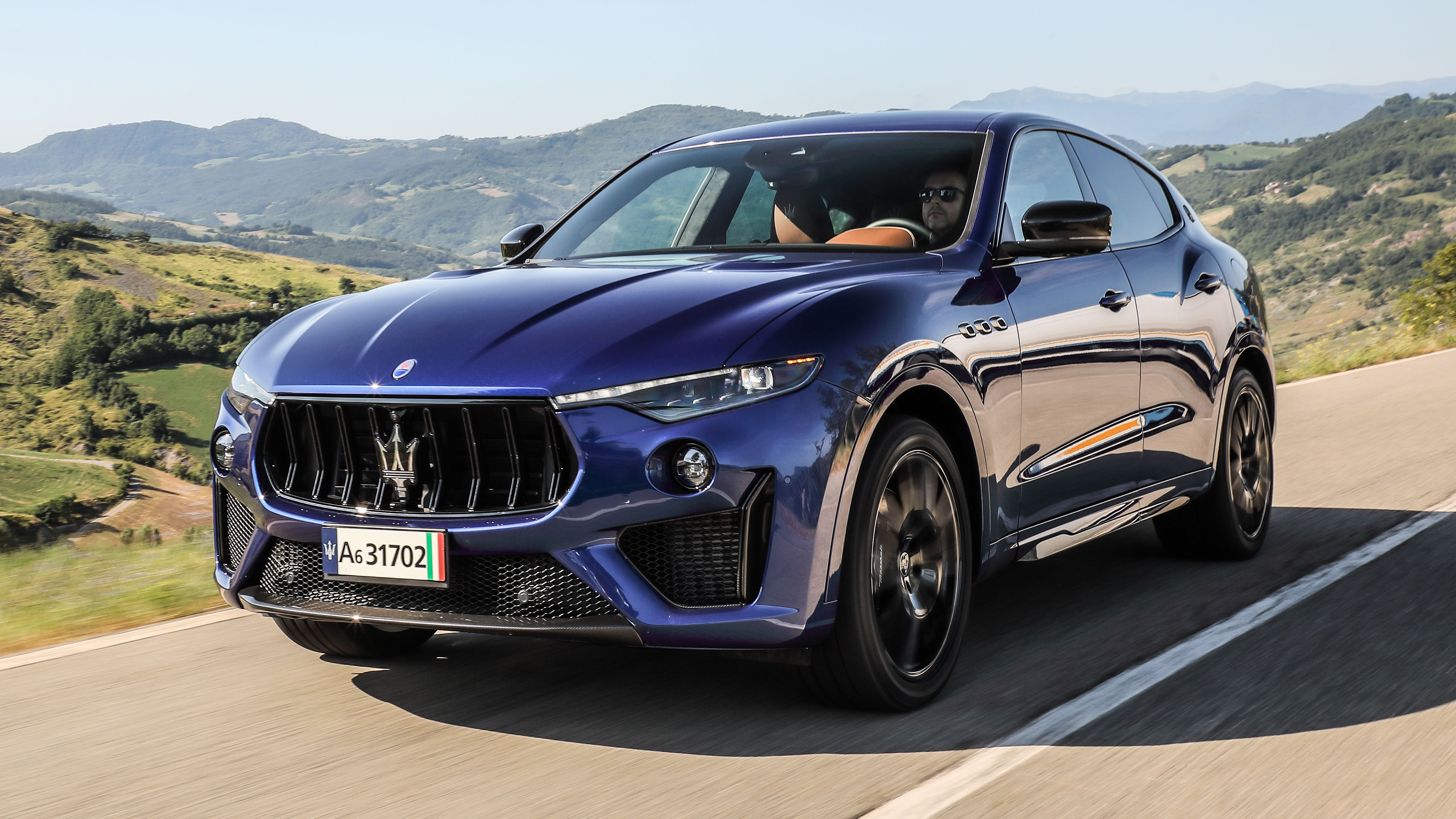
8. **Maserati Levante SUV**The Maserati Levante SUV, a compelling blend of Italian luxury and sporty performance in the utility vehicle segment, unfortunately also finds itself among the vehicles with significant value erosion. Over a five-year period, this luxury SUV loses an average of 63.7% of its original MSRP, translating to an average financial hit of $64,991 for its owners. Despite its distinctive styling and powerful engine options, the Levante’s performance in the used car market highlights the unique challenges faced by niche luxury brands in a fiercely competitive environment.
A primary factor contributing to the Levante’s rapid depreciation, much like its Ghibli sedan sibling, is the inherently high cost of ownership associated with the Maserati brand. The premium initial purchase price is compounded by the expenses of specialized maintenance and parts, which can be considerably higher than those for more mainstream luxury manufacturers. These elevated long-term running costs often deter prospective second-hand buyers, who are keenly aware of the financial commitment beyond the initial purchase.
Furthermore, Maserati’s brand perception in the broader used car market plays a role. While recognized for its exotic appeal and rich heritage, Maserati does not command the same widespread trust in terms of reliability or accessibility of service as established German luxury rivals. This narrower market appeal limits demand for used Levante models, directly impacting its ability to retain value against competitors that benefit from larger sales volumes and more extensive service networks.
The luxury SUV segment itself is incredibly saturated and dynamic. The Levante competes against a wide array of formidable vehicles from brands like Porsche, BMW, Mercedes-Benz, and Audi, all of which continuously update their offerings with the latest technology and improved efficiency. This intense competition means that an older Levante, despite its charms, struggles to hold its price against newer and often more technologically advanced alternatives, contributing significantly to its rapid depreciation.
Car Model Information: 2017 Maserati Levante S
Name: Maserati Levante
Caption: 2016 Maserati Levante S (Europe, pre-facelift)
Manufacturer: Maserati
Production: May 2016–2024
ModelYears: 2017–2024
Assembly: Turin
Designer: Centro Stile Maserati
Class: Mid-size crossover SUV#Luxury vehicles
BodyStyle: Sport utility vehicle
Layout: F4 layout
Platform: Maserati M156 platform
Related: Maserati Ghibli (M157),Maserati Quattroporte VI
Engine: unbulleted list
Motor: eBooster 48V (eTorque)
Transmission: ZF Friedrichshafen,ZF 8HP transmission,Automatic transmission
Drivetrain: Mild hybrid
Wheelbase: 3004 mm
Abbr: on
Length: 5003 mm
Width: 1968 mm
Height: 1679 mm
Weight: convert
Sp: uk
Categories: All-wheel-drive vehicles, Articles with short description, Cars introduced in 2016, Luxury crossover sport utility vehicles, Luxury sport utility vehicles
Summary: The Maserati Levante (Tipo M161) is an executive crossover SUV produced by Italian manufacturer Maserati at the Mirafiori factory in Turin from 2016. The Levante went on sale in Europe in May 2016, and in North America in September 2016. Production of the Levante ended in 2024, commemorated with the release of a top-spec 424BHP special edition.
The Levante was named after a warm, easterly wind that blows in the western Mediterranean Sea, southern France, down to the Strait of Gibraltar. The name of the wind, in turn, comes from the Latin word “levare”, which means “to rise”. Its design is based on the Kubang concept car that debuted at the 2011 Frankfurt Auto Show.
Get more information about: Maserati Levante
Buying a high-performing used car >>>
Brand: Maserati Model: Levante
Price: $19,988 Mileage: 54,539 mi.
Read more about: Navigating the Market: The 10 Cars with the Steepest Depreciation, What Analysts Reveal for Lease Holders
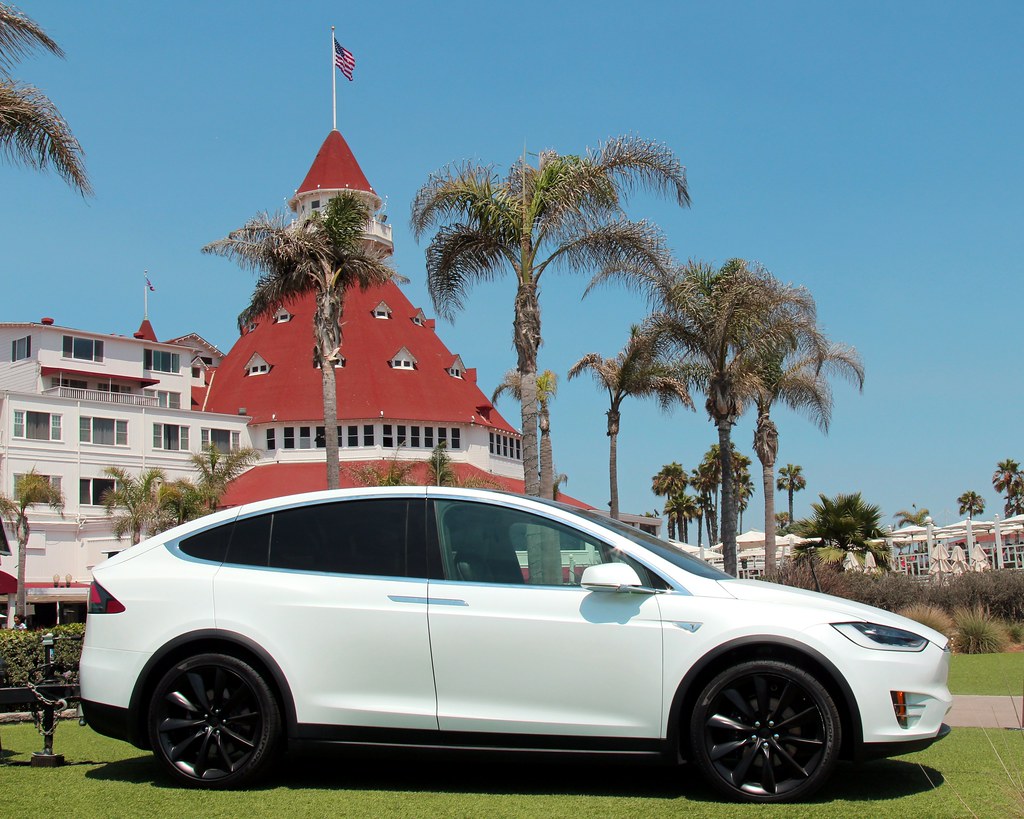
9. **Tesla Model X EV**The Tesla Model X EV, once a groundbreaking electric SUV known for its unique Falcon Wing doors and cutting-edge technology, has also experienced substantial value loss. According to iSeeCars data, the Model X depreciates by 63.4% of its original MSRP over five years, amounting to an average financial loss of $53,846 for its owners. This places it firmly among the electric vehicles struggling most with long-term value retention, underscoring the specific challenges inherent in the rapidly evolving EV market.
One of the most significant drivers behind the Model X’s depreciation, consistent with other early electric vehicles, is the relentless pace of technological advancement within the EV sector. Battery technology, charging speeds, and range capabilities have progressed dramatically since the Model X’s introduction. Older models, with their comparatively outdated battery packs and sometimes slower charging, become less appealing to used car buyers seeking the latest performance and efficiency metrics. The high cost and complexity of potential battery replacements further exacerbate these concerns.
Beyond technological obsolescence, Tesla’s unique market position and operational strategies contribute to its depreciation. Unlike traditional automakers, Tesla operates a direct-to-consumer sales model without a widespread dealer network that typically helps to stabilize used car values through certified pre-owned programs and readily available parts and service. The company’s frequent price adjustments for new vehicles can also ripple into the used market, causing unpredictable shifts in value for older models.
The broader trend of electric vehicle depreciation, as highlighted by iSeeCars data showing a 58.8% average depreciation rate for five-year-old EVs, disproportionately affects higher-priced early adopters like the Model X. While its “kilowatt-powered” performance and unique features were revolutionary, the used market’s cautious approach to aging EV technology, coupled with the brand’s own market dynamics, results in a significant financial drawback for original owners.
Car Model Information: 2024 RAM 2500 Big Horn
Name: Tesla Model X
Manufacturer: Tesla, Inc.
Production: 2015–present
Assembly: unbulleted list
Designer: Franz von Holzhausen
Class: Crossover (automobile)
BodyStyle: 5-door SUV
Layout: unbulleted list
Doors: unbulleted list
Related: Tesla Model S
Motor: unbulleted list
Title: Discontinued
Transmission: unbulleted list
Battery: unbulleted list
ElectricRange: FTP-75
Wheelbase: cvt
Length: cvt
Width: cvt
Height: cvt
Weight: unbulleted list
Sp: us
Categories: 2020s cars, All Wikipedia articles in need of updating, All Wikipedia articles written in American English, All articles containing potentially dated statements, All articles lacking reliable references
Summary: The Tesla Model X is a battery electric mid-size luxury crossover SUV built by Tesla, Inc. since 2015. Developed from the full-sized sedan platform of the Tesla Model S, the vehicle uses distinctive falcon wing doors for rear passenger access.
The Model X has an EPA size class as an SUV, and shares around 30 percent of its content with the Model S, half of the originally planned 60 percent, and weighs about 10 percent more. Both the Model X and Model S are produced at the Tesla Factory in Fremont, California. The prototype was unveiled at Tesla’s design studios in Hawthorne, California, on February 9, 2012. First deliveries of the Model X began in September 2015. After one full year on the market, in 2016, the Model X ranked seventh among the world’s best-selling plug-in cars. A refresh of the Tesla Model X was introduced in 2021, offering a new “Plaid” performance model, along with a revised interior, powertrain, and suspension.Another update of the Model X was introduced in June 2025 with a new front bumper camera, new wheel designs, increased third-row space, dynamic ambient lighting, and adaptive headlights. The updates are similar to the Model S, which was updated at the same time.
As of July 2025, the Model X is available as a Long-Range version with an estimated EPA range of 352 miles (566 km) and a high performance “Plaid” version with an estimated EPA range of 335 miles (539 km).
Get more information about: Tesla Model X
Buying a high-performing used car >>>
Brand: Tesla Model: Model X
Price: $46,895 Mileage: 37,555 mi.
Read more about: Urgent Safety Alert: Ford Recalls 133,000 Lincoln Aviator SUVs Over Detaching Trim Components
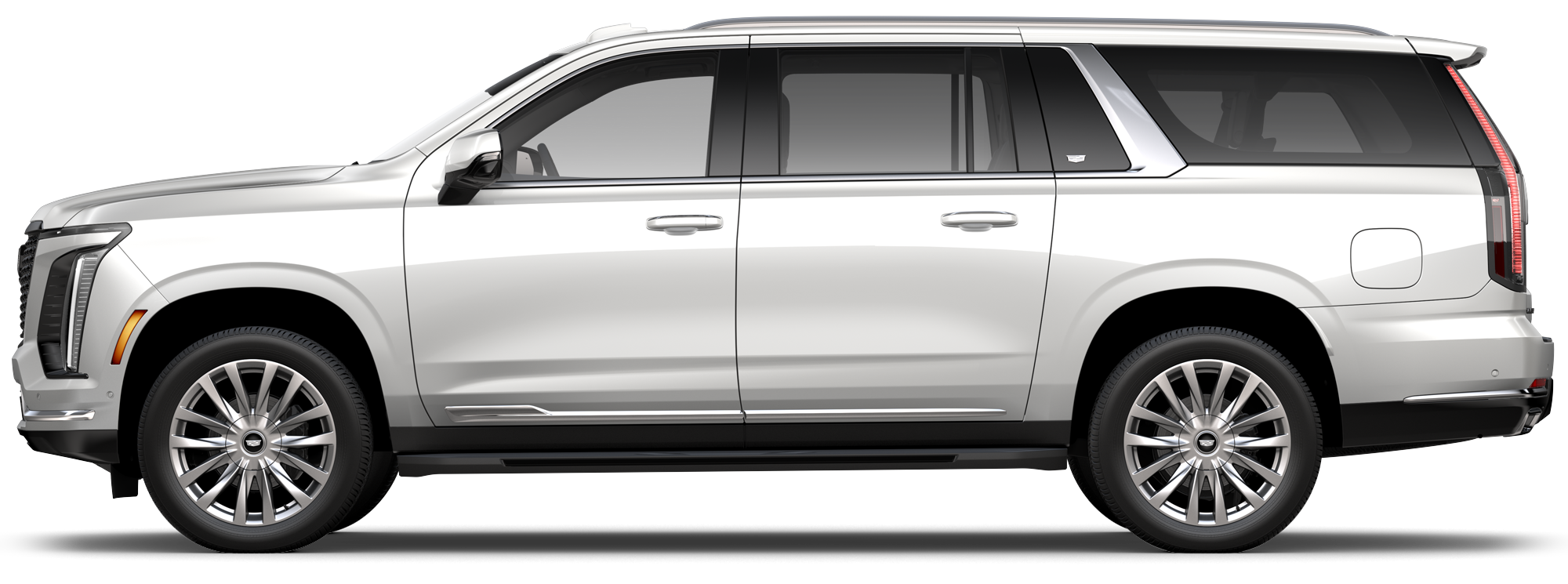
10. **Cadillac Escalade ESV SUV**The Cadillac Escalade ESV SUV, a staple of American luxury with its commanding presence and cavernous interior, also suffers from a considerable depreciation rate. Over five years, the Escalade ESV loses 62.9% of its original MSRP, representing an average financial depreciation of $56,996. This substantial loss highlights how even highly desirable, full-size luxury SUVs can become significant financial burdens for their owners in the long run, defying expectations of strong residual value.
Among the primary reasons for the Escalade ESV’s steep value decline is the elevated cost of ownership typical of large, premium SUVs. Its formidable purchase price is just the beginning, as considerable expenses for fuel, maintenance, and parts can quickly accumulate. These ongoing costs are a major deterrent for potential used-car buyers who are often more budget-conscious and wary of the significant financial commitments involved in maintaining such a grand vehicle outside of its initial warranty.
The full-size luxury SUV segment is characterized by intense competition and a continuous stream of new models. The Escalade ESV, despite its iconic status, faces relentless pressure from rivals that often boast newer designs, more advanced technology, and sometimes more efficient powertrains. While a “premium badge and the increased performance or luxury features that come with it are often sought out by new car buyers,” as Karl Brauer notes, “the used car market doesn’t prioritize those traits to the same degree.” This means an older Escalade ESV, despite its initial grandeur, struggles to stand out against a fresh crop of competitors.
Moreover, shifting consumer preferences can also impact the value of large, gasoline-powered SUVs. As market trends lean towards more economical, hybrid, or smaller luxury options, the appeal of older, full-size vehicles with substantial fuel consumption can diminish. This, combined with the general tendency for luxury vehicles to depreciate more rapidly, means the Cadillac Escalade ESV, while luxurious and capable, ultimately delivers a significant financial lesson to those who purchased it new.
Car Model Information: 2024 RAM 2500 Big Horn
Name: Cadillac Escalade
Caption: Fifth generation Cadillac Escalade
Manufacturer: Cadillac
Production: 1998–present,2002–present (ESV),2001–2013 (EXT),2008–2013 (Hybrid)
ModelYears: 1999–2000,2002–present
Class: Full-size,luxury car,sport utility vehicle
Related: ubl
Layout: Front-engine, rear-wheel drive layout,Front-engine, four-wheel drive layout
Categories: 2000s cars, 2010s cars, 2020s cars, All-wheel-drive vehicles, All Wikipedia articles in need of updating
Summary: The Cadillac Escalade is a full-size luxury SUV manufactured by General Motors and marketed by Cadillac as its first major entry into the SUV market. The Escalade was introduced for the 1999 model year in response to an influx of new luxury SUVs in the late 1990s including the Mercedes-Benz M-Class, Range Rover, Lexus LX, and Ford’s 1998 debut of the Lincoln Navigator. The Escalade project went into production only ten months after it was approved. The Escalade is built in Arlington, Texas.
The term “escalade” refers to a siege warfare tactic of scaling defensive walls or ramparts with the aid of ladders or siege towers. More generally, it is a French word which is the noun-equivalent form of the French verb escalader, which means “to climb or scale”.
The Escalade is currently sold in North America and select international markets (Europe and Asia) where Cadillac has official sales channels. The Escalade ESV (Escalade Stretch Vehicle) is sold in North America, Russia, and the Middle East, but is only available by special order in some international markets. The right-hand-drive Escalade and Escalade ESV are available through third-party conversion specialists without official agreement with Cadillac in Australian, Oceanic, and Japanese markets.
On August 8, 2023, GM presented the Escalade IQ, an all-electric version of the Escalade, and the third model in Cadillac’s EV line, after the Celestiq, and Lyriq. It is expected to go on sale in late 2024 for the 2025 model year, with a starting price of $130,000.
The Escalade has gone through five generations, the most recent (the fifth) prsented in 2021, noted for its technology and self-driving capability. The fifth generation Escalade is nearly two metres high, and was criticized by The Verge for its excessive size and hazard to pedestrians.
Get more information about: Cadillac Escalade
Buying a high-performing used car >>>
Brand: Cadillac Model: Escalade ESV
Price: $46,895 Mileage: 37,555 mi.
Read more about: Navigating the Market: The 10 Cars with the Steepest Depreciation, What Analysts Reveal for Lease Holders

11. **Land Rover Range Rover SUV**The Land Rover Range Rover is an iconic luxury SUV that seamlessly blends unparalleled off-road capability with sumptuous comfort and advanced technology. Despite its esteemed status as a symbol of rugged refinement and opulence, the Range Rover faces significant challenges in maintaining its resale value, losing 62.9% of its original MSRP over five years, which amounts to an average financial loss of $67,858. This depreciation underscores the complex financial realities that accompany ownership of such a high-end, specialized vehicle.
A primary factor contributing to the rapid depreciation of the Land Rover Range Rover is its inherently high cost of ownership. The substantial initial purchase price is merely the beginning, as owners face considerable expenses for specialized maintenance, complex repairs, and premium parts, which are significantly higher than those for many other luxury SUVs. These ongoing financial demands can act as a significant deterrent for potential second-hand buyers, making a used Range Rover a less attractive proposition for those prioritizing long-term affordability.
Another critical element influencing the Range Rover’s value retention is the perception, and sometimes reality, of its reliability compared to other luxury SUVs. While celebrated for its robust construction and sophisticated systems, Land Rover vehicles have historically faced concerns regarding long-term reliability and the complexity of their electronic and mechanical components. Potential used-car buyers often approach these vehicles with caution, weighing the risk of expensive and frequent repairs, which inevitably drives down demand and, consequently, resale prices.
The Land Rover Range Rover also operates within an intensely competitive luxury SUV market. It constantly battles for market share against formidable rivals such as the BMW X7, Mercedes-Benz GLS, and Audi Q7, all of which offer comparable levels of luxury, performance, and advanced technology. This crowded segment provides prospective buyers with a wide array of choices, compelling older Range Rover models to compete vigorously against both newer iterations and strong alternatives, ultimately contributing to its accelerated depreciation.
Car Model Information: 2020 Volkswagen Tiguan 2.0T SE
Caption: 2022 Range Rover SE P440e (L460, fifth generation, United Kingdom)
Aka: unbulleted list
Name: Range Rover
Manufacturer: unbulleted list
Production: 1969–present
Assembly: unbulleted list
Class: unbulleted list
Layout: Front-engine, four-wheel-drive layout
Sp: uk
Categories: 1980s cars, 1990s cars, 2000s cars, 2010s cars, 2020s cars
Summary: The Land Rover Range Rover, generally shortened to Range Rover, is a 4WD luxury mid to full size crossover marque and sub-brand of Jaguar Land Rover, owned by India-based Tata Motors. The Range Rover line was launched in 1970 by British Leyland and since 2022 is in its fifth generation.
Additional models have been launched under the Range Rover name, including the Range Rover Sport, Range Rover Evoque, and Range Rover Velar.
Get more information about: Range Rover
Buying a high-performing used car >>>
Brand: Land Rover Model: Range Rover
Price: $21,000 Mileage: 37,878 mi.
Read more about: Urgent Safety Alert: Ford Recalls 133,000 Lincoln Aviator SUVs Over Detaching Trim Components

12. **Audi A8L sedan**As Audi’s flagship luxury sedan, the A8L epitomizes sophistication, cutting-edge technology, and exceptional performance, designed to rival the best in its class. However, despite its premium standing and advanced features, the Audi A8L experiences significant challenges in maintaining its resale value, shedding 62.7% of its original MSRP over five years, equating to an average financial loss of $57,724. This substantial depreciation positions it among the luxury vehicles that deliver a harsh financial lesson to their initial owners.
One of the most significant contributors to the rapid depreciation of the Audi A8L is the elevated cost of ownership. Beyond its high initial purchase price, luxury cars like the A8L come with substantial expenses for specialized maintenance, complex electronic system repairs, and premium replacement parts. These ongoing costs are a considerable obstacle for potential buyers in the used car market, who are often more sensitive to the long-term financial commitments required to maintain such a technologically advanced vehicle.
The rapid advancement of automotive technology further erodes the A8L’s value. As Audi consistently introduces newer models packed with updated features, enhanced performance, and the latest innovations, older generations can quickly lose their competitive edge. The A8L, often a pioneer in adopting features like advanced driver assistance systems, sophisticated infotainment interfaces, and high-quality materials, finds that these once-revolutionary technologies can become outdated, making prior model years less attractive to consumers seeking modern amenities.
Moreover, the Audi A8L operates in a fiercely competitive luxury sedan segment. It faces direct challenges from equally prestigious rivals such as the BMW 7 Series and the Mercedes-Benz S-Class, which offer comparable levels of luxury, performance, and technological sophistication. This intense market saturation means that older A8L models must compete against both newer versions of themselves and a strong lineup of alternatives, contributing significantly to their accelerated depreciation.
Read more about: The Quest for Calm: Unveiling the Top 15 Quietest Midsize SUVs of 2024 for a Serene Drive

13. **Audi Q7 SUV**The Audi Q7 SUV, a sophisticated and spacious luxury vehicle known for its elegant design, advanced technology, and robust performance, also experiences a notable decline in resale value. Over five years, the Audi Q7 sheds 61.6% of its original MSRP, resulting in an average financial loss of $37,256 for its owners. This places the Q7 among the luxury SUVs that deliver a significant financial blow to their initial purchasers, demonstrating that even desirable models in popular segments are not immune to rapid depreciation.
One of the primary reasons for the Q7’s substantial value loss is the elevated cost of ownership that characterizes most luxury SUVs. The considerable initial purchase price is compounded by equally significant expenses for maintenance, parts, and specialized servicing, particularly as the vehicle ages. These ongoing financial commitments can deter potential second-hand buyers, who often prefer vehicles with lower long-term running costs, directly impacting the Q7’s desirability in the used market.
Similar to other luxury vehicles, the Q7’s value is affected by the rapid advancement of automotive technology. Audi consistently integrates the latest innovations in infotainment, driver assistance, and powertrain efficiency into its new models. While impressive when new, these cutting-edge features can quickly become outdated, making older Q7 models less attractive to consumers seeking the most current amenities. This technological obsolescence plays a crucial role in depressing resale values over time.
The luxury SUV market is fiercely competitive, with the Audi Q7 facing intense pressure from a wide array of rivals, including the BMW X5, Mercedes-Benz GLE, and Volvo XC90. These competitors frequently introduce updated designs and features, creating a crowded marketplace where older models must fight to maintain their value. This constant influx of newer, more appealing options from various brands contributes significantly to the Q7’s accelerated depreciation.
Car Model Information: 2017 Audi Q7 3.0T Premium
Name: Audi Q7
Manufacturer: Audi AG
Production: November 2005–present
ModelYears: 2006–present
Class: Full-size,luxury SUV
BodyStyle: SUV
Layout: Longitudinal engine,front-engine, four-wheel-drive
Sp: uk
Categories: 2010s cars, 2020s cars, All-wheel-drive vehicles, All Wikipedia articles written in British English, All articles with dead external links
Summary: The Audi Q7 is a crossover SUV made by the German manufacturer Audi, unveiled in September 2005 at the Frankfurt Motor Show. Production of this seven-seater SUV began in November 2005 at the Volkswagen Bratislava Plant in Bratislava, Slovakia.
The Q7 was the first SUV sold by Audi and went on sale in 2006. Later, Audi’s second SUV, the Q5, was unveiled as a 2009 model. Audi has since unveiled a third SUV model, the Q3, which went on sale in the third quarter of 2011, and a fourth SUV model, the Q2, which went on sale in November 2016. The Q7 shares a Volkswagen Group MLB platform and chassis with the Bentley Bentayga, Lamborghini Urus, Porsche Cayenne and the Volkswagen Touareg.
The Q7 is the second largest vehicle from Audi, being surpassed by the Q6 since 2022. While the Q7 has been the flagship SUV in Audi’s product portfolio, a top-of-the-line model with a lower roof, called the Audi Q8, was released in 2018.
It was one of the vehicles involved in the Volkswagen emissions scandal, with the company ordered to buy back some of the affected cars manufactured between 2009 and 2012. The Q7 is also subject to hundreds of NTSB complaints with many relating to potentially catastrophic engine failure issues, and a class-action lawsuit related to squealing brakes.
Get more information about: Audi Q7
Buying a high-performing used car >>>
Brand: Audi Model: Q7
Price: $15,888 Mileage: 95,072 mi.
Read more about: Beyond the Showroom Shine: Uncovering the Deep Discounts on Trucks (and More) Lingering on Dealer Lots
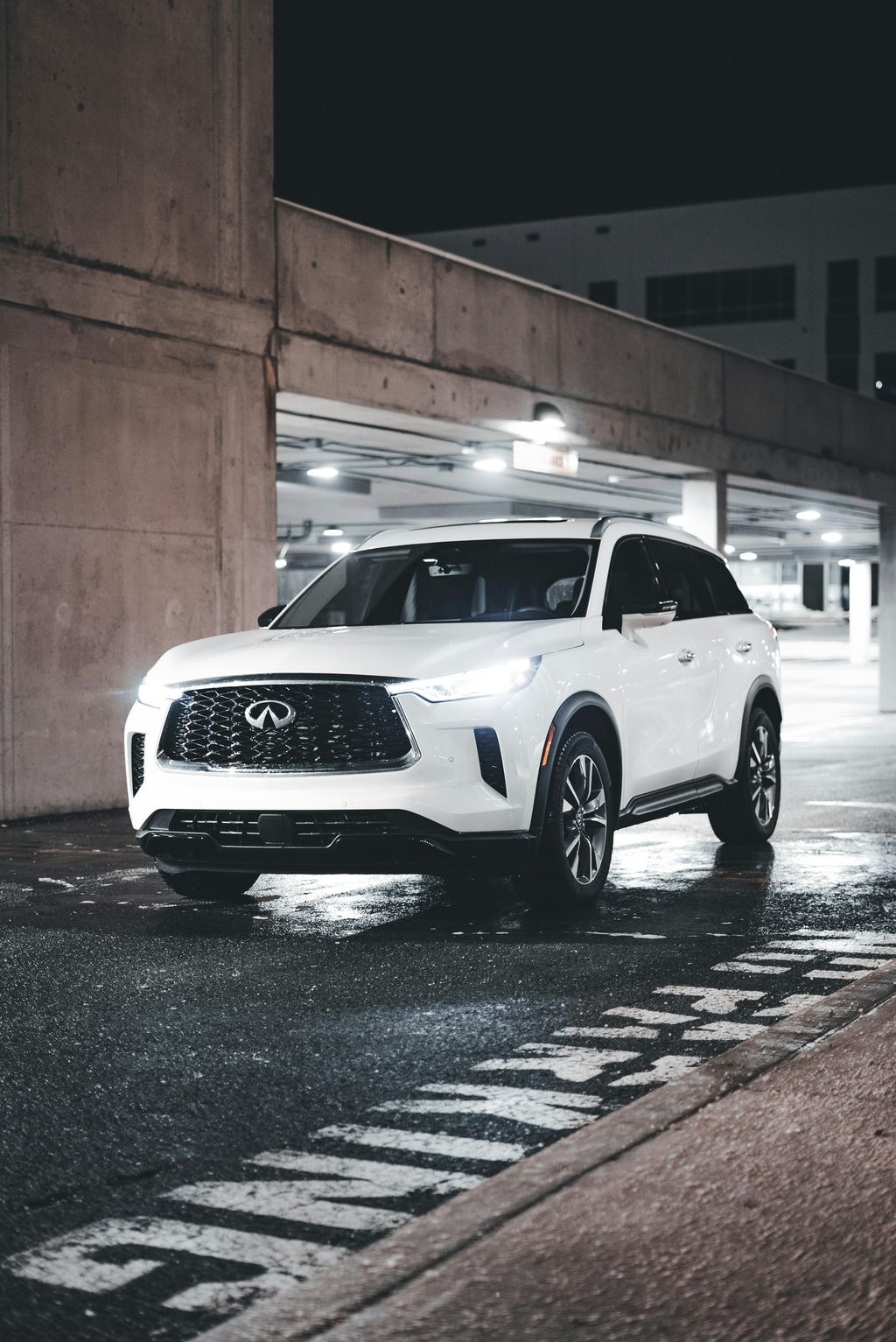
14. **Infiniti QX60 SUV**The Infiniti QX60 SUV, a mid-size luxury crossover offering a spacious interior and comfortable ride, also makes our list of vehicles with poor resale value. Over a five-year period, the QX60 loses a significant 61.5% of its original MSRP, translating to an average financial depreciation of $30,888. This performance highlights how even practical luxury crossovers, despite their family-friendly appeal, can struggle to maintain their worth in a competitive and evolving market.
Like many luxury vehicles, the QX60’s rapid depreciation is largely attributable to its high cost of ownership. The initial premium price tag is followed by notable expenses for maintenance and repairs, which, while perhaps not as exorbitant as some higher-end luxury brands, are still higher than those for mainstream alternatives. These costs can be a significant barrier for used car buyers who are often looking for more economical long-term solutions, impacting the QX60’s attractiveness in the secondary market.
Furthermore, brand perception and the intense competition within the mid-size luxury SUV segment play a crucial role. Infiniti, while offering premium features and comfort, often struggles to stand out against more dominant luxury players like Lexus, Acura, and the German trifecta. This sometimes perceived gap in brand prestige or cutting-edge technology means that the QX60 may not command the same resale premiums as its direct rivals, leading to a faster decline in value.
The market for mid-size luxury crossovers is continually expanding and innovating, with new models and updated features constantly being introduced. This dynamic environment means that older QX60 models must compete against a fresh array of options that often boast newer designs, improved fuel efficiency, or more advanced infotainment systems. This heightened competitive pressure inevitably drives down the resale value of previous generations, making the Infiniti QX60 a cautionary tale for those seeking strong long-term value.
Car Model Information: 2019 INFINITI QX60 Luxe
Name: Infiniti QX60
Caption: 2017 Infiniti QX60 (L50)
Manufacturer: Nissan
Aka: Infiniti JX (2012–2013)
Production: February 2012 – August 2013 (JX35),September 2013 – present (QX60)
ModelYears: 2013 (JX35),2014–present (QX60)
Class: Executive car,crossover SUV
BodyStyle: SUV
Related: Nissan Pathfinder
Layout: Front-engine, front-wheel-drive,Front-engine, all-wheel-drive
Predecessor: Infiniti QX4
Categories: 2020s cars, All-wheel-drive vehicles, All Wikipedia articles written in American English, All articles with bare URLs for citations, All articles with unsourced statements
Summary: The Infiniti QX60, called the Infiniti JX until the 2014 model year, is a mid-size luxury crossover SUV with three-row seating produced by Infiniti, the luxury vehicle division of Japanese automaker Nissan. It is underpinned by an elongated Nissan Murano platform also used by the Nissan Pathfinder.
In keeping with Infiniti’s naming scheme for 2014, in which cars begin with Q and SUVs begin with QX, the JX was renamed to QX60. While the number previously denoted engine displacement (for example, 35=3.5L engine), the new number, 60, is largely to do with its place in the product lineup, with larger numbers usually corresponding to more expensive vehicles.
Get more information about: Infiniti QX60
Buying a high-performing used car >>>
Brand: Infiniti Model: QX60
Price: $17,594 Mileage: 79,609 mi.
Read more about: Financial Freefall: The 15 Cars That Will Absolutely Decimate Your Wallet with Depreciation
Our extensive analysis of these 15 vehicles with the worst five-year resale values reveals a clear pattern: luxury badges and cutting-edge electric vehicle technology, while appealing to new car buyers, often fail to translate into strong demand in the used market. High ownership costs, rapid technological obsolescence, intense competition, and specific brand perceptions are powerful forces driving depreciation. For consumers, this data serves as a vital reminder to look beyond the showroom sparkle and consider the total cost of ownership, including the often-overlooked but financially significant factor of resale value, when making their next automotive investment. Making an informed decision can mean the difference between a smart purchase and a depreciating financial burden.

